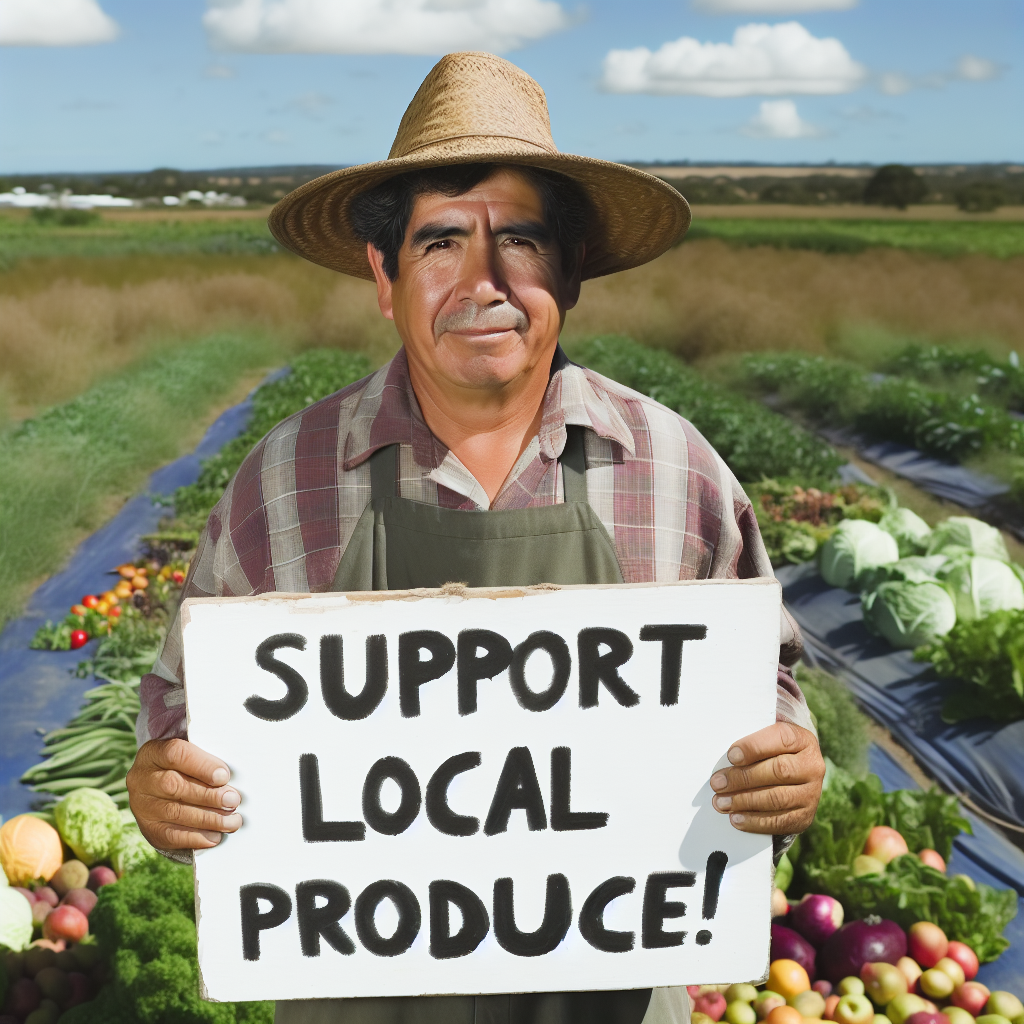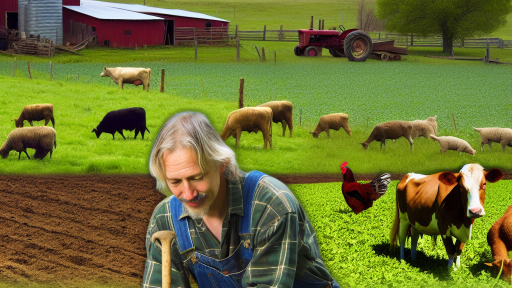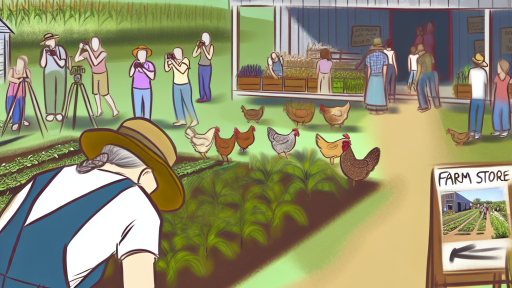Understanding Local Food Sourcing
Benefits for Farmers
Farmers gain significant advantages from local food sourcing.
They increase their market reach by targeting local consumers.
Moreover, local sourcing helps reduce transportation costs.
As a result, farmers can provide fresher products to their customers.
In addition, local sourcing fosters community connections.
This not only builds brand loyalty but also strengthens local economies.
Farmers also enjoy faster feedback from consumers.
This immediate feedback can improve product offerings.
Furthermore, it enhances their ability to adapt to market demands.
Benefits for Consumers
Consumers receive numerous benefits through local food sourcing as well.
They enjoy access to fresh, seasonal produce.
Additionally, local foods often contain fewer preservatives.
This results in healthier food options for families.
Moreover, consumers can support their local economy.
By purchasing locally, they contribute to community well-being.
Transform Your Agribusiness
Unlock your farm's potential with expert advice tailored to your needs. Get actionable steps that drive real results.
Get StartedLocal food sourcing also offers greater transparency in sourcing practices.
This ensures consumers are aware of where their food comes from.
Finally, consumers often experience better flavor in locally sourced food.
Freshness plays a crucial role in enhancing the taste of produce.
Building Relationships
Local food sourcing fosters stronger relationships among community members.
Farmers who engage with consumers build trust and loyalty.
This community engagement encourages consumer advocacy for local farms.
Additionally, it creates opportunities for educational initiatives.
Workshops on nutrition and cooking can deepen connections.
Such events encourage families to pursue healthier eating habits.
Moreover, they create spaces for community gathering and interaction.
Ultimately, these relationships generate a supportive network.
Sustainable Practices
Local food sourcing promotes sustainable farming practices.
It encourages farmers to use fewer chemical inputs.
This approach helps preserve the environment and natural resources.
Furthermore, it fosters biodiversity on farms.
Farmers can employ crop rotation and organic methods as a result.
Consequently, they improve soil health and reduce erosion.
Additionally, local sourcing minimizes carbon footprints.
Shorter supply chains result in reduced emissions from transportation.
Thus, consumers can feel good about their purchasing decisions.
Supporting local farms contributes to a healthier planet.
Building Relationships with Local Chefs and Restaurants
Identify Key Local Establishments
Start by researching local chefs and restaurants in your area.
Focus on those who prioritize sourcing local ingredients.
Showcase Your Farming Business
Publish your professional farming services profile on our blog for a one-time fee of $200 and reach a dedicated audience of farmers and agribusiness owners.
Publish Your ProfileCompile a list of potential partners who align with your farm’s values.
Craft a Compelling Pitch
Prepare a concise and appealing introduction about your farm.
Highlight what makes your produce unique and relevant.
Make sure to include any certifications or organic practices you follow.
Establish Personal Connections
Reach out to chefs directly through email or social media.
Consider arranging a personal visit to showcase your farm.
Building rapport is crucial to forming lasting partnerships.
Offer Sampling Opportunities
Provide samples of your produce to interested chefs.
This allows them to evaluate the quality of your products.
Encourage feedback and adjustments to meet their preferences.
Stay Engaged and Follow Up
Maintain regular communication with your restaurant partners.
Share updates about seasonal produce and availability.
This keeps your farm top of mind and strengthens relationships.
Participate in Local Events
Engage in farmer’s markets, food festivals, and community events.
These platforms allow you to connect directly with local chefs.
Networking opportunities will help you grow your presence in the community.
Leverage Social Media and Online Marketing
Use social media to showcase your farm’s story and products.
Tag local chefs and restaurants when you share collaborations.
This can enhance visibility for both your farm and their establishment.
Utilizing Farmers’ Markets for Direct Selling Opportunities
Identifying Local Farmers’ Markets
Begin by researching local farmers’ markets in your community.
Look for markets that align with your farm’s values.
Visit potential markets to understand their dynamics.
Attend markets and connect with other local vendors.
Building Relationships with Customers
Engage with customers at your market booth.
Share your farming story to create a personal connection.
Offer samples of your produce to entice buyers.
Encourage conversations about local food sourcing.
Promoting Your Presence at Markets
Use social media to inform followers about market schedules.
Create eye-catching signage for your booth to attract attention.
Consider collaborating with local businesses for cross-promotion.
Offer special promotions to encourage repeat visits.
Offering Diverse Product Options
Provide a variety of fresh produce to cater to different tastes.
Consider adding value-added products like jams or pickles.
Source complementary items from other local vendors.
This expands your offerings and enhances customer satisfaction.
Gathering Customer Feedback
Encourage customers to provide feedback on your products.
Use surveys or informal conversations to gauge preferences.
This information helps you adapt your offerings over time.
Responding to feedback fosters customer loyalty.
Explore Further: Building Trust With Ethical Farming
Showcase Your Farming Business
Publish your professional farming services profile on our blog for a one-time fee of $200 and reach a dedicated audience of farmers and agribusiness owners.
Publish Your ProfileLeveraging Social Media to Showcase Local Food Products
Choosing the Right Platforms
Select the social media platforms popular with your target audience.
Visual platforms like Instagram excel in showcasing food products.
Next, consider Facebook for community engagement and local sharing.
Twitter can be great for quick updates and engaging conversations.
Compare the platforms to determine which aligns with your goals.
Creating Engaging Content
Produce high-quality images of your local food products.
Use natural lighting to enhance the visual appeal of your photos.
Include behind-the-scenes content to highlight your farming practices.
Share recipes featuring your products to engage your audience.
Utilize videos to tell stories about your farm and its offerings.
Engaging with Your Community
Interact with your followers by responding to comments promptly.
Encourage user-generated content by hosting photo contests.
Share testimonials from local customers to build trust.
Collaborate with local influencers to widen your reach.
Host live sessions to connect and educate your audience about your products.
Utilizing Hashtags and Geotags
Employ relevant hashtags to increase your posts’ visibility.
Research trending hashtags related to local food and farming.
Incorporate geotags to attract local customers effectively.
Using these strategies enhances discoverability among your community.
Tracking and Analyzing Performance
Monitor engagement metrics to understand what resonates with your audience.
Use insights from social media analytics to refine your strategy.
Adjust your content based on follower interactions and preferences.
This data-driven approach will help optimize future campaigns.
You Might Also Like: Building Strong Farm and School Partnerships
Collaborating with Community Supported Agriculture (CSA) Programs
Understanding CSA Programs
Community Supported Agriculture connects local farms with consumers.
Members typically purchase a share of the harvest in advance.
This model provides farmers with upfront capital and guaranteed sales.
In return, members receive fresh produce throughout the growing season.
Benefits of Collaboration
Working with CSA programs enhances your farm’s visibility.
It fosters strong relationships with community members.
Additionally, these partnerships can lead to increased customer loyalty.
Furthermore, you can tap into a ready-made audience eager for local food.
Creating a Successful Partnership
Start by researching local CSA programs in your area.
Contact program coordinators to discuss potential collaboration.
Offer to supply fresh produce and special items for their shares.
Consider hosting farm events for CSA members to engage directly.
Marketing Strategies
Promote your involvement through social media channels.
Share updates and photos of your farm operations regularly.
Collaborate on newsletters to highlight your products.
Feature seasonal recipes or preparation tips for CSA members.
Showcase Your Farming Business
Publish your professional farming services profile on our blog for a one-time fee of $200 and reach a dedicated audience of farmers and agribusiness owners.
Publish Your ProfileBuilding Stronger Community Ties
Engage with members through farm tours and events.
Educate them on sustainable farming practices and your methods.
Ask for feedback to improve your offerings and services.
Encourage members to share their experiences with friends.
Uncover the Details: Companion Planting Ideas for Small-Scale Gardens

Creating a Unique Brand Identity Focused on Local Sustainability
Understanding Your Local Market
Begin by researching your local market demographics.
Identify the needs and preferences of your community.
Gather insights on popular local products and trends.
Develop an understanding of your target audience’s values.
This knowledge guides your branding strategy effectively.
Defining Your Brand Values
Your brand should embody sustainability and community support.
Outline your commitment to local sourcing and environmental practices.
Share your values through storytelling across all channels.
This will resonate with customers seeking authentic connections.
Designing a Memorable Logo
Your logo is a visual representation of your brand.
Ensure it reflects your commitment to sustainability.
Consider using earthy colors and natural motifs.
This makes your brand instantly recognizable.
Keep the design simple yet impactful for better recall.
Creating Engaging Marketing Materials
Develop brochures and flyers highlighting your local produce.
Showcase your farm’s unique story and sustainability practices.
Utilize high-quality images to captivate potential customers.
Include testimonials from satisfied customers to build trust.
Make sure your materials align with your brand identity.
Utilizing Social Media Effectively
Engage with your audience through social media platforms.
Share behind-the-scenes content from your farm regularly.
Highlight seasonal produce and local collaborations.
Encourage user-generated content to build community involvement.
This approach fosters loyalty and expands your reach.
Building Partnerships with Local Businesses
Collaborate with local restaurants and markets for promotions.
Offer your products to their menus or shelves.
Participate in local farmers’ markets to increase visibility.
Networking can enhance credibility and brand presence.
Engage in joint marketing efforts with partners for greater impact.
Find Out More: Essential Tools for Direct-to-Consumer Farming
Strategies for Educational Workshops on Local Food Practices
Identifying Target Audiences
Start by defining your target audience clearly.
Consider local chefs, farmers, and community members.
Engaging different groups requires tailoring your content.
Use surveys to assess their interests and needs.
This helps in creating relevant and appealing workshops.
Showcase Your Farming Business
Publish your professional farming services profile on our blog for a one-time fee of $200 and reach a dedicated audience of farmers and agribusiness owners.
Publish Your ProfileDesigning Engaging Workshop Content
Ensure your content is informative yet engaging.
Include hands-on activities to enhance learning experiences.
Utilize visual aids to support your teaching points.
Incorporate local success stories to inspire attendees.
Discuss practical applications of local food sourcing techniques.
Utilizing Expert Speakers
Inviting local experts can add credibility to your workshops.
Invite nutritionists, chefs, or experienced farmers.
These speakers can provide unique insights and perspectives.
Plan a Q&A session to encourage interaction.
This can promote a deeper understanding of local practices.
Promoting the Workshops
Use multiple channels to promote your workshops.
Leverage social media to reach a broader audience.
Send out newsletters to your subscriber list.
Collaborate with local organizations for mutual promotion.
Utilize flyers in community centers and local businesses.
Evaluating the Workshops
Collect feedback after each workshop for improvement.
Create simple evaluation forms for attendees to fill out.
Ask them about the content, delivery, and overall experience.
Use this feedback to enhance future workshops.
Continuous improvement will keep your offerings relevant.
Navigating Regulatory Requirements for Local Food Sales
Understanding Local Regulations
Local regulations vary by region and can significantly impact food sales.
Be aware of the specific laws that govern food safety in your area.
Contact local health departments to acquire relevant guidelines.
Additionally, consult agricultural extension services for assistance.
Licensing and Permits
Most localities require farmers to obtain specific licenses.
These licenses typically encompass food handling and sales permits.
Research the necessary permits before starting your local food business.
Keep all documentation readily available for inspections.
For example, the Green Valley Farmers must renew their food sales permit annually.
Food Safety Standards
Adhere to food safety standards to protect your customers.
Ensure proper sanitation procedures are in place on your farm.
Train staff on safe food handling practices consistently.
Regular audits can help maintain compliance with safety standards.
Linwood Organics conducts monthly safety checks to uphold their reputation.
Labeling Requirements
Labeling food products accurately is crucial for compliance.
Labels should include all ingredients and potential allergens.
Furthermore, local regulations may dictate specific labeling styles.
Research these requirements to avoid legal issues.
Direct-to-Consumer Sales Regulations
Selling directly to consumers can involve unique regulations.
Many states have farm-to-table legislation that impacts local sales.
Showcase Your Farming Business
Publish your professional farming services profile on our blog for a one-time fee of $200 and reach a dedicated audience of farmers and agribusiness owners.
Publish Your ProfileUnderstand the rules about farmer’s markets and roadside stands.
Programs like Local Harvest help farmers navigate these regulations.
Compliance with National Standards
In addition to local regulations, be aware of national standards.
The Food and Drug Administration governs many national food safety guidelines.
Use their resources to ensure alignment with federal expectations.
Being compliant can build consumer trust and promote your farm.
Staying Informed
Regulations can change frequently, so staying informed is vital.
Join local agricultural associations to receive updates on regulations.
Participate in training sessions offered by these organizations.
This engagement can help you stay compliant and make necessary adjustments.
Additional Resources
Farm-to-Table and Hyper-Local Sourcing Transforming the Food …
Farm to Table: Building Local and Regional Food Systems – SARE




